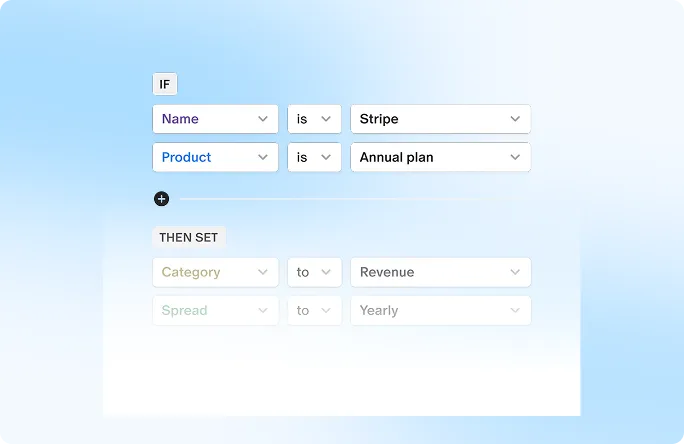When a company decides to split its stock, it's not just a simple arithmetic adjustment; it can signal confidence in growth prospects, enhance market liquidity, and even attract a broader base of investors. However, stock splits also come with their own set of considerations that every investor should be aware of.
In this article, we simplify the concept of stock splits in detail, covering what they are, how they work, their benefits and disadvantages, and providing a practical example to illustrate these important financial events.
What are Stock Splits?
A stock split happens when a business divides its current shares into several new shares, hence increasing the total number of shares in circulation and subsequently lowering the price per share. This action does not change the company's overall market capitalization; instead, it makes the shares more affordable for investors.
For example, in a 2-for-1 stock split, an investor with one share priced at $100 would end up with two shares priced at $50 each, maintaining the total investment value at $100.
How do Stock Splits Work?
In a stock split, a company increases its share count by issuing more shares to current shareholders. When a stock split is announced, the company specifies a split ratio (e.g., 2-for-1 or 3-for-1).
After the split, shareholders receive additional shares according to this ratio. The share price is adjusted downward to reflect the increased number of shares. Importantly, as the number of shares rises and the share price falls, the total value of the investment stays the same.
4 Reasons for Stock Splits
Companies typically initiate stock splits for several strategic reasons:
1. Enhanced Accessibility: A decrease in the stock price makes it more accessible to a wider variety of investors, which could draw in new shareholders.
2. Improved Liquidity: Increasing the number of shares can lead to higher trading volumes, facilitating easier buying and selling of the stock.
3. Market signaling: Stock splits can signal management's confidence in future growth prospects.
4. Maintaining an Optimal Trading Range: Companies often aim to keep their stock price within a certain range to ensure it remains attractive and manageable for trading.
Key Dates in a Stock Split
Key dates associated with stock splits include:
1. Announcement Date: The date when the company publicly declares its intention to split the stock.
2. Record Date: The date on which shareholders must be on the company's books to be eligible for additional shares.
3. Ex-Split Date: The date when the stock begins trading at the new adjusted price.
4. Effective Date: The day when the split becomes effective and new shares are allocated to shareholders.
Types of Stock Splits
There are two types of stock splits:
1. Forward Stock Split: This is the most common type, where a company increases the number of shares and reduces the price per share proportionally.
For example, in a 2-for-1 stock split, shareholders get one extra share for every share they own, and the price of each share is reduced by half.
2. Reverse Stock Split: In this less common scenario, a company reduces the number of its outstanding shares, increasing the price per share proportionally.
In a 1-for-2 reverse stock split, shareholders get one new share for every two shares they currently own, which effectively doubles the share price.Companies may implement reverse splits to meet minimum price requirements for stock exchanges or to improve the stock's image.
Benefits of Stock Splits
Stock splits can offer several strategic advantages to both companies and investors:
1. Psychological Boost for Investors: A lower stock price post-split can make investors feel like the stock is more affordable, even though the company's valuation remains the same.
2. Potential Index Inclusion: Some stock indices have price-based requirements, and a stock split could position a company favorably for inclusion in a broader market index.
3. Stronger Marketability: Lower-priced shares appeal to retail investors who may find the stock more attractive, potentially increasing demand.
4. Encourages Trading Activity: With more shares available and lower per-share prices, trading volumes may increase, which can reduce bid-ask spreads and make it easier to buy and sell the stock.
Disadvantages of Stock Split
Despite their advantages, stock splits also come with disadvantages:
1. No Real Value Increase: A stock split does not create any intrinsic value; it merely alters share quantity and price.
2. Increased Volatility: Lower-priced shares may attract more speculative trading, potentially leading to greater price fluctuations.
3. Costs Involved: Companies may incur costs related to administrative changes and communication with shareholders about the split.
4. Potential Short-term Focus: Some investors might incorrectly view splits as a value-creating event
Conclusion
Stock splits represent a significant corporate action that can impact market dynamics and investor behavior. While they don't change a company's fundamental value, they can make shares more accessible and liquid.
Investors should consider stock splits as part of a company's overall strategy and assess them alongside other financial metrics when making investment decisions. Instead, focus on fundamental factors like company performance, growth prospects, and overall market conditions.


 Equity management
Equity management

 Fund management
Fund management

 Fund management
Fund management

 Fund management
Fund management





































